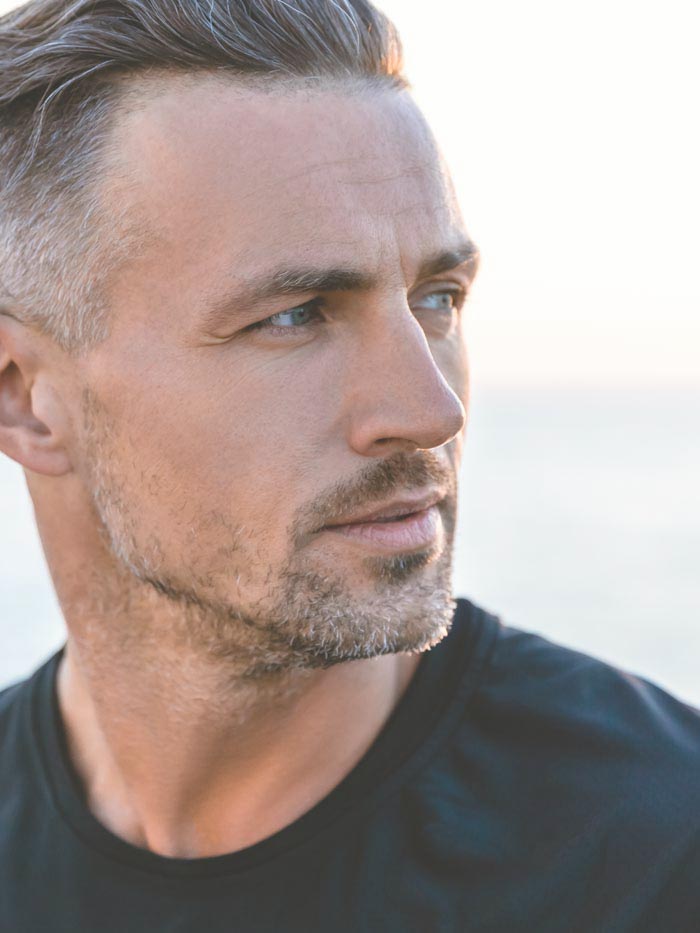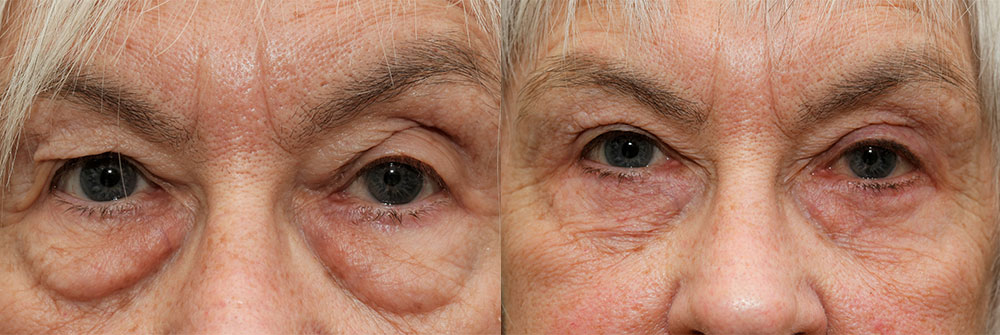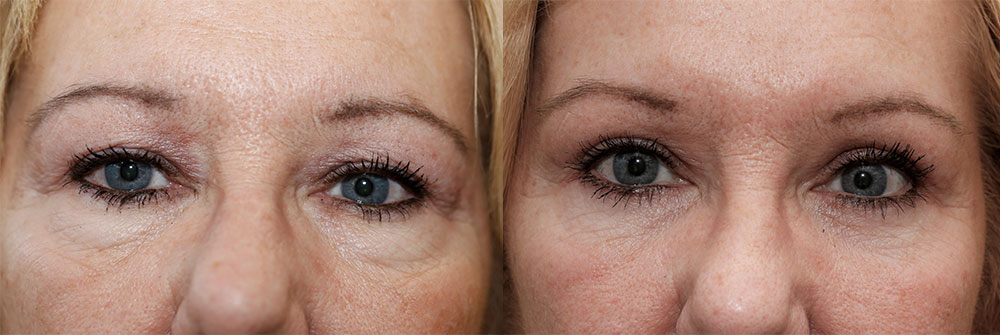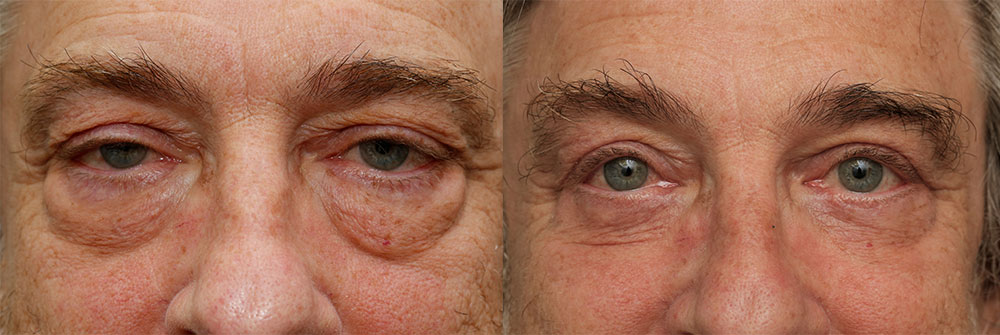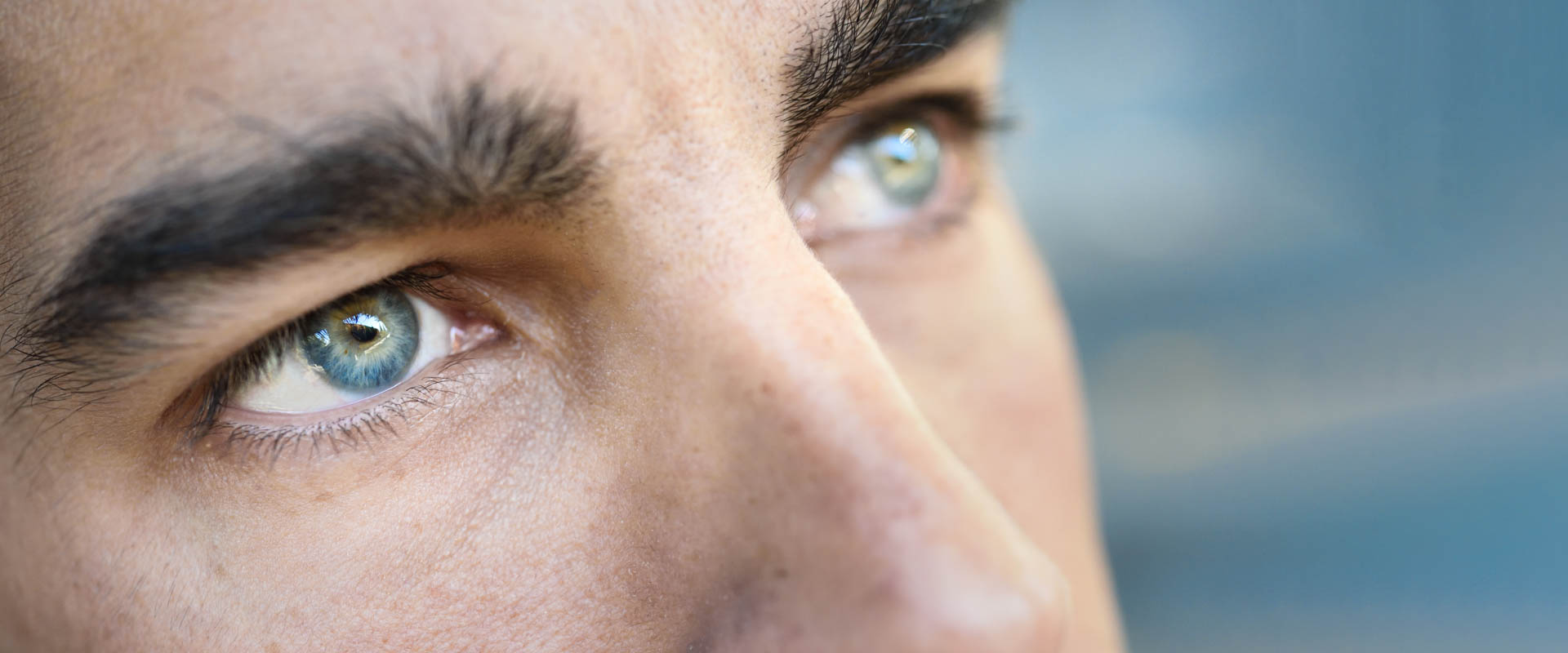
Serving Ashland, Medford, Grants Pass, Oregon
The eyes are the first thing we notice when we meet someone new. We are taught from a young age to engage in direct eye contact. However, eyes with “bags” and “dark circles” or those that look tired, droopy, or swollen may not always reflect our vibrant inner self. That’s because the eyes truly play a big role in first impressions. Anything affecting the delicate area around the eyes can quickly cause people to comment on how perpetually tired you look.
Eyelid surgeon Dr. Vivian Schiedler performs lower blepharoplasty, also known as lower eyelid surgery. This is one of the many treatments offered at Oasis Eye Face and Skin in Ashland, OR. Our clinic specializes in smoothing the skin and fat pads underneath your eyes to help you achieve a more alert and youthful appearance.
What is Lower Eyelid Blepharoplasty Surgery?
Lower eyelid blepharoplasty is a procedure that addresses the area extending from the lower eyelashes to the bony rim of the eye socket. This area is commonly known for developing bags and dark circles. Most people attribute these traits with being tired or sleep deprived; however, a lack of sleep is not always the culprit.
Under-eye Bags
Eyelid “bags” are caused by excess orbital fat and fluid accumulation. The fluid accumulation can sometimes go away with rest, like when you sleep all night. However, if the problem is excess fat deposit, then you might need a different treatment option. Fat storage under the eye is typically due to aging, but it can occur in younger individuals with a genetic predisposition.
Dark Circles
The cause of “dark circles” can differ in individuals. The most common cause is overhead lighting from the sun or indoors casting a shadow over the fat pads that are starting to bulge forward. This makes the area just below the fat pads look darker. Another common reason is the loss of tissue just below the eyes forming a hollow. The delicate eyelid skin ages quickly in this area and becomes more transparent allowing the underlying muscle to look dark or bluish through the skin. Other times it is because sleep deprivation causes the area around the eye to become dull, allowing the blood vessels to be more noticeable. This problem may require lifestyle changes to allow your skin to improve. Other individuals might have darker pigment within the skin itself, also called hyperpigmentation.
Dermatochalasis
Dermatochalasis refers to having excess loose skin in the lower eyelids. This usually results from aging, since the skin around the eye loses elasticity and stretches the older we get. The lower eyelid is often the first area of the face to show wrinkles due to being thin and prone to collagen loss. Smoking and sun exposure will damage this delicate skin much faster. Limiting or eliminating the use of tanning beds and using sunglasses with a UV coating help delay the development of dermatochalasis.
However, if you already have this loose skin, lower blepharoplasty can help. Benefits of lower blepharoplasty are:
- Smooths out under-eye bags
- Eliminates lower eye puffiness
- Tightens lower eyelid fine lines and wrinkles
- Removes excess fat beneath the eyes
- Reduces dark circles
- Restores your vibrant, youthful, rested appearance
Smooth and Tighten with Lower Eyelid Surgery
Lower eyelid blepharoplasty is performed to reduce a tired or sad appearance by smoothing out excess skin wrinkles and puffiness. This procedure can be performed in-office with local and oral anesthesia. Patients who prefer deeper sedation can also be accommodated. Surgery usually requires an incision in the lower lash line or on the inside of the lower eyelid. This incision is then used to reduce fullness by manipulating orbital fat pads. Lower eyelid surgery may also require tightening loose and stretchy eyelids. Hollows under the eyes can be filled with a re-draping of the fat pads. We offer many complementary rejuvenation treatments that can be used to improve the final results. These include deep chemical peels, broadband light therapy, and dermal fillers.
The eye area is extremely delicate, so depending on a surgeon who is skilled in performing surgeries and treatments around the eyes is key. Board-certified oculofacial plastic surgeon Dr. Vivian Schiedler is not only an ophthalmologist, but also an expert eye surgeon. She takes into consideration the position of the eye (a prominent versus deep set eye), the health of the skin around the eye, and whether there are any pre-existing conditions such as dry eyes or a weak blink.
What to Expect after Upper or Lower Eyelid Blepharoplasty
Scarring is often minimal with this surgery due to the how thin the eyelid skin is. Most patients are typically left with a very fine line that is placed in a natural crease and hidden by the eyelid fold. Some people may have a visible outer incision, but these typically blend well into smile lines or crow’s feet. Dr. Schiedler prefers using non-dissolvable sutures to minimize redness and bumps that can occur with dissolving sutures. Bruising and swelling are to be expected, but these symptoms can be managed by applying cold compresses and sleeping with your head elevated.
What is the difference between upper and lower blepharoplasty?
Upper eyelid surgery addresses excess skin and tissue that hangs over the eyes and may affect vision and/or appearance. Lower eyelid surgery, or lower blepharoplasty, addresses the area that extends from the lower lashes to the bottom of the eye socket. These procedures can be performed together or individually depending on the patient’s needs and cosmetic goals.
Am I a candidate for lower eyelid surgery?
If you have puffy bags or fat pockets in your lower eye area that are creating a tired or aged appearance, you may be a great candidate for eyelid surgery. The ideal candidate also includes individuals wanting to address wrinkles, saggy or loose lower eyelid skin.
What is the recovery from eyelid surgery?
It usually takes one to two weeks for bruising and swelling to disappear completely. This timeline may be extended for some patients, like those taking blood thinners. It is essential to stop blood thinners and some herbal supplements before and after surgery to reduce the risk of bleeding and potential vision complications. Physical activity should be limited for the first week after surgery to prevent bleeding.
When will I see results from lower blepharoplasty?
Final results can be seen in as little as three weeks, but some patients will take as long as four months to see full results. If all four eyelids are done at the same time, it may cause some swelling on the surface of the eye that typically resolves within a few days to weeks.
Adding a Deep Chemical Peel to Lower Eyelid Surgery
Surgery can recontour the lower eyelids, but the skin that remains is often sun damaged, thin, and very wrinkled. Adding a deep chemical peel helps any eyelid surgery by thickening, tightening, and smoothing out the remaining skin. Deep chemical peels help by promoting the production of collagen over the following six months. Results in the lower eyelids after a deep peel can be seen in as little as 10 days. Deep chemical peels can be repeated for additive effects and are very well tolerated by most patients. The number of treatments varies, with some younger patients only needing one deep peel to improve thinning skin and wrinkles. Others require repeated peels every few years to prevent the need for surgery.
If you look tired all the time or have noticed bags or dark circles around your eyes, we recommend contacting Dr. Vivian Schiedler right away. Oasis Eye Face and Skin is here to help, and scheduling a personalized consultation is easy. Call (541) 708-6393 or contact us online today.
